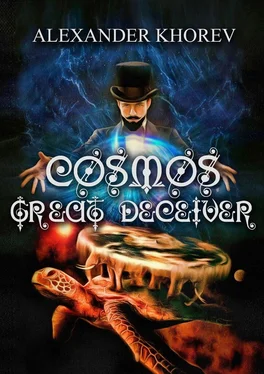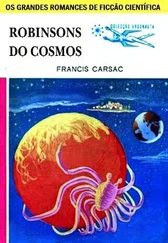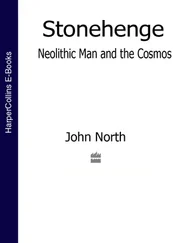Aleksandr Khorev - Cosmos – Great Deceiver
Здесь есть возможность читать онлайн «Aleksandr Khorev - Cosmos – Great Deceiver» — ознакомительный отрывок электронной книги совершенно бесплатно, а после прочтения отрывка купить полную версию. В некоторых случаях можно слушать аудио, скачать через торрент в формате fb2 и присутствует краткое содержание. ISBN: , Жанр: Прочая научная литература, на английском языке. Описание произведения, (предисловие) а так же отзывы посетителей доступны на портале библиотеки ЛибКат.
- Название:Cosmos – Great Deceiver
- Автор:
- Жанр:
- Год:неизвестен
- ISBN:9788381898829
- Рейтинг книги:5 / 5. Голосов: 1
-
Избранное:Добавить в избранное
- Отзывы:
-
Ваша оценка:
- 100
- 1
- 2
- 3
- 4
- 5
Cosmos – Great Deceiver: краткое содержание, описание и аннотация
Предлагаем к чтению аннотацию, описание, краткое содержание или предисловие (зависит от того, что написал сам автор книги «Cosmos – Great Deceiver»). Если вы не нашли необходимую информацию о книге — напишите в комментариях, мы постараемся отыскать её.
Cosmos – Great Deceiver — читать онлайн ознакомительный отрывок
Ниже представлен текст книги, разбитый по страницам. Система сохранения места последней прочитанной страницы, позволяет с удобством читать онлайн бесплатно книгу «Cosmos – Great Deceiver», без необходимости каждый раз заново искать на чём Вы остановились. Поставьте закладку, и сможете в любой момент перейти на страницу, на которой закончили чтение.
Интервал:
Закладка:
Well transmits the movement of the pulse and the curvature of space wave. Waves come in various forms. We are interested in a wave that propagates from the initial impulse of energy in all directions in the form of a sphere. But this three-dimensional wave cannot just be seen and better for clarity, to use an ordinary wave on the surface of water, especially since they have similar properties. We throw a stone into the water, and a wave with a crest at the top spreads from it in all directions. It seems to us that water diverges in all directions. But this is a misconception. It is the energy impulse that diverges in all directions, and the particles of water do not move forward.
The wave itself is not a material body. Along the perimeter of the wave propagation, it is not water that moves, but energy. The “hump” of the wave is moving. The wave velocity is the speed with which the wave crest moves (the particles themselves move vertically to the ridge).
As known. From the starting point, the impulse will go in the form of a wave in all directions at the same speed. This wave forms a circle on the water or a ball in three-dimensional space around the point of the initial impulse. The distance from the center of the pulse to the perimeter of a circle or ball is the same in all directions. It turns out this way: the impulse is one, the amount of energy in it is strictly defined. If we make measurements of the magnitude of the pulse at different points of the perimeter of a circle or ball that are on the same away from the starting point, we get exactly the same results. Let’s say that this is a unit, and we cannot summarize this unit. We cannot summarize all these points along the perimeter of a ball or circle. It will not be possible to add 1 +1 and get 2 and so on. The total amount of energy of the ball will be equal to the amount of energy at one of its points. That is, the unit turns out to be spread around the entire perimeter of the ball and is equal to itself and the set.
Let’s continue the experiment: transform the ball into a circle of two-dimensional space. What will change? Nothing – both the speed and the momentum of the circle are absolutely equal to the same magnitudes of the ball. And now we turn a circle around the perimeter, like a fan, into a one-dimensional vector. What changed? Nothing. Both speed and momentum are absolutely equal. It turns out that there is no distance between points along the perimeter of the ball or circle. That is, the distance exists only for an outside observer, but for the points themselves there is no distance. At the same distance from the central impulse between the points of energy not only there is no distance, but the time is the same, and therefore the time is also zero. Therefore, we can say that there is no space and time. It turns out that the energy itself has no space and time.
From spatial measurements, a impulse has only an indefinite magnitude of the wavelength and the distance from the original pulse, the radius. Question:
If there are no differences in the energy values of the three-dimensional, two-dimensional and one-dimensional worlds, may be such a momentum is one-dimensional? Isn’t any wave one-dimensional?.. or not having any measurements at all?.. maybe it is a one-dimensional one?
No matter how many different factors – the components are not intended, the implementation of this plan is possible only through a single action, through a sequence of single actions. The movement itself is one-dimensional. This is a vector movement from point A to point B.
I have long thought about the extent to which energy can bend space and came to the fundamental conclusions about the structure of our Universe. As we determined, our physical world can be graphically divided into two states. This is zero on the graph – the complete absence of space, movement and time, and the second – direct vectors emanating from zero – the complete opposite of zero, because this is exactly the space with dimensions, movement and, accordingly, time.
Despite the fact that zero is the absence of space, it can contain enormous energy within it. It was this enormous energy that twisted the space around itself that the space simply closed itself on itself and turned into the first elementary particle – a proton.
Although zero is the complete absence of space, but it is also not in itself, like a ruler, which embodies the dimension and lies, without touching anyone. By one side, zero is inextricably linked with our three-dimensional world.
Yes, you can see it yourself on the chart: three lines come out of zero: length, width and height. So zero is another dimension in addition to length, width and height. Therefore, the space must be counted from zero. Zero, then length, width and everything else. Without zero, everything else simply will not exist. And zero without the rest does not exist either.
What is the role of zero?
For energy, spatial dimensions will be levels. The very first level will be the most powerful energy in the universe. It is so powerful that it simply collapses the space around it into a ball and thus forms the first brick of the Universe – a proton. Proton is not space yet. This is a scaffolding, with the help of which the coupling is connected with our physical world. This is a collapsed space. It is so curved space that it simply closed itself. In spite of the proton seems to block all energy inside, however, the presence of huge energy inside reflects on the outer surface around the proton forming the next energy level. And the next element that immediately occupies the next energy level is the next element of our Universe – the electron. Or even so. This outer energy level is also so strong that it is again tries to wind space into a ball. But it has no longer the strength for it. Moreover, the place in the center is already occupied by a proton. And this clot of energy nothing remains, only to spin around in the form of an electron. If there is a proton no space, because everything in it is closed on itself, then the electron already combines in itself the features of a spaceless particle and a spatial element – a wave. Well, the wave energy can no longer roll space into a ball, but only bends it – this is energy in its pure form, and it will shape the space. If the electron is still a closed orbit – a ring or a ball, then electromagnetic radiation is already sawing this ring and, rotating in a circular orbit, rushes forward, breaks out of the atom, leaving behind what looks like a sinusoid on the plane – and thus electromagnetic radiation forms space and time.
Although the atom has certain specific dimensions, this is not yet space.
And now, agree that you can offer another option for measuring space. This null space is a proton, pre-space is an electron and, finally, our three-dimensional space is electromagnetic radiation.
It is we that live in three-dimensional space. But to be honest, energy levels are not limited to atoms. Looped all around. Our planet itself is a ball – another level. Then there is space with ring orbits of planets, stars, galaxies. Yes, and our Universe itself is most likely a ball. So the length, width and height of a rather narrow scope. And the amount of energy can be judged by the degree of curvature of space.
From a point, a pulse of energy spreads in all directions and loses energy in proportion to the square of the radius. And what if we assume that with an increase in the radius, nothing changes. That is, when the radius increases, the inertial system changes too. That is, in each subsequent inertial system, time and distance change proportionally at the next level. And then the amount of energy remains the same?
Chapter 3. Time
We talked about straight lines and found out, firstly, that some lines are associated with movement – these are vectors and, secondly, that there is something difficult to measure, but a very important property of the object being measured, things, phenomena also associated with movement – this is what are the functions of a given object, thing, phenomenon, what is its essence. We also came to the conclusion that to assess this essence, one more component is necessarily needed – this is an observer. Energy is directly connected with the essence of the object, with the movement. It is energy in the form of a pulse that gives an initial impetus to movement. And, finally, time is also directly connected with these two phenomena, because movement from one point to another occurs over time.
Читать дальшеИнтервал:
Закладка:
Похожие книги на «Cosmos – Great Deceiver»
Представляем Вашему вниманию похожие книги на «Cosmos – Great Deceiver» списком для выбора. Мы отобрали схожую по названию и смыслу литературу в надежде предоставить читателям больше вариантов отыскать новые, интересные, ещё непрочитанные произведения.
Обсуждение, отзывы о книге «Cosmos – Great Deceiver» и просто собственные мнения читателей. Оставьте ваши комментарии, напишите, что Вы думаете о произведении, его смысле или главных героях. Укажите что конкретно понравилось, а что нет, и почему Вы так считаете.










